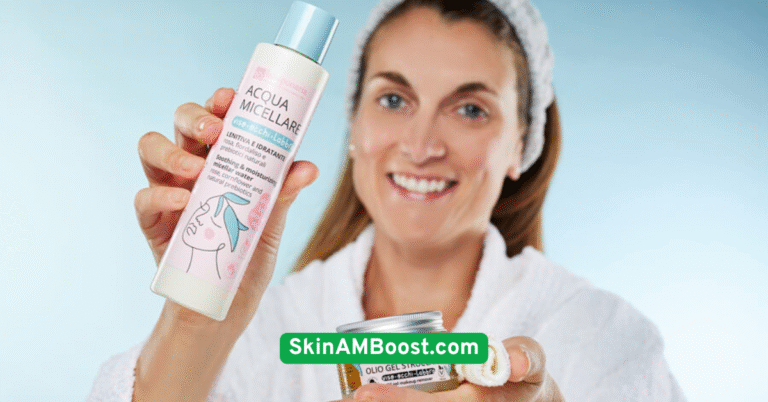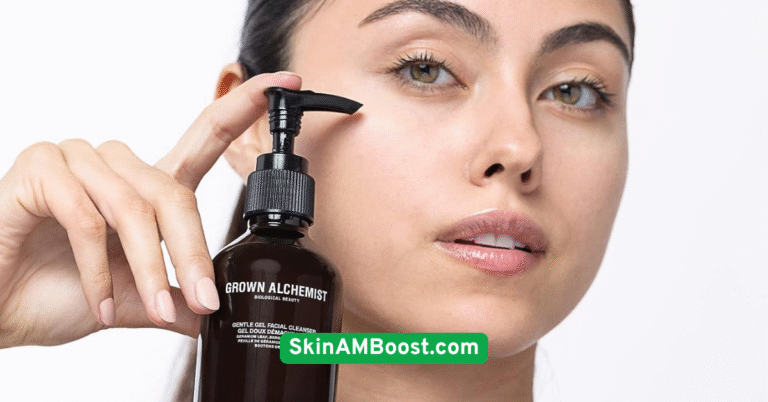30 Quick Skincare Tips for Beginners

From understanding your skin type to building a routine that sticks, this guide will walk you through simple but powerful tips to help you look and feel your best every day. Ready? Let’s get glowing!
1. Know Your Skin Type
The first and most important step in skincare is knowing your skin type. Are you oily, dry, combination, sensitive, or normal? This knowledge will guide your product choices and routine.Oily skin tends to be shiny and prone to acne, while dry skin feels tight and flaky. Combination skin means you may have oily areas (usually the T-zone) and dry patches elsewhere. Sensitive skin reacts easily to products or environmental factors. Normal skin is balanced with no major issues.Once you identify your skin type, you can select cleansers, moisturizers, and treatments that complement your skin’s natural state rather than working against it. This avoids irritation and improves results. Many drugstore and online quizzes can help, or you can consult a dermatologist for a professional assessment.

2. Start with the Basics
When starting your skincare journey, less is often more. Begin with three essential products: a gentle cleanser, a moisturizer, and sunscreen. This basic trio covers cleansing, hydration, and protection — the foundation of healthy skin.Avoid overwhelming yourself with multiple serums, masks, or treatments early on. Once you’re comfortable with the basics, you can gradually add products that target specific concerns like acne, aging, or hyperpigmentation.Starting simple reduces the risk of irritation and keeps your routine manageable and budget-friendly. Remember, consistent use of a few good products will beat sporadic use of many.

3. Always Remove Makeup Before Bed
Sleeping with makeup on is a major no-no. Makeup clogs pores, traps dirt, and prevents your skin from breathing overnight, leading to breakouts and dullness.Use a gentle makeup remover or micellar water to dissolve cosmetics. Follow with your regular cleanser to wash away impurities completely. This double-step ensures your skin is truly clean and ready to repair while you sleep.Even if you’re tired or just wore light makeup, make removing it a non-negotiable step. Your skin will thank you with fewer blemishes and better texture.

4. Use a Gentle Cleanser
Harsh soaps can strip your skin of natural oils, disrupting its protective barrier and causing dryness or irritation. For beginners, opt for sulfate-free, pH-balanced cleansers that effectively clean without over-drying.Foaming cleansers are often good for oily skin, while cream or lotion cleansers suit dry or sensitive types. Avoid fragranced or antibacterial soaps that may be too aggressive.A gentle cleanser maintains skin’s moisture balance, allowing it to stay healthy and resilient. Wash your face twice daily with lukewarm water to remove dirt and excess oils.

5. Moisturize Right After Cleansing
Hydration is key to glowing skin. After cleansing, your skin can feel tight and dehydrated. Applying moisturizer immediately (while your skin is still damp) locks in hydration and restores moisture.Choose moisturizers based on your skin type. Lightweight gel formulas work well for oily skin, while richer creams nourish dry or mature skin. Many moisturizers now include added benefits like antioxidants or SPF.Skipping moisturizer can cause your skin to produce excess oil to compensate for dryness, leading to breakouts and imbalance.

6. Never Skip Sunscreen
One of the most important skincare steps is sun protection. Ultraviolet (UV) rays damage skin cells, cause premature aging, and increase the risk of skin cancer.Daily use of sunscreen with at least SPF 30 shields your skin from harmful UVA and UVB rays. Even on cloudy days or indoors, UV rays can penetrate windows, so make sunscreen a daily habit.Choose broad-spectrum, non-comedogenic sunscreens that won’t clog pores or feel heavy. Reapply every two hours if you’re outdoors.

7. Don’t Over-Exfoliate
Exfoliation removes dead skin cells, revealing fresher skin underneath. But over-exfoliating — especially with harsh scrubs — can irritate and damage your skin barrier.Limit exfoliation to 1–2 times per week. For beginners, gentle chemical exfoliants like alpha hydroxy acids (AHAs) or beta hydroxy acids (BHAs) are preferable over physical scrubs.These acids dissolve dead skin without abrasion, improving texture, unclogging pores, and boosting glow. Always follow exfoliation with moisturizer and sunscreen to protect newly revealed skin.

8. Patch Test New Products
Before introducing a new product fully into your routine, do a patch test. Apply a small amount on your wrist or behind your ear and wait 24-48 hours to check for adverse reactions.Patch testing helps prevent allergic reactions, redness, or breakouts from irritating ingredients. It’s a simple step that can save you from frustration and wasted products.

9. Introduce Products Slowly
Your skin needs time to adjust to new products. Introduce one product at a time, spacing out additions by a few days.If you add multiple new products simultaneously, it’s hard to identify which one causes irritation or improvement. Slow introductions help you build a personalized routine that works.

10. Stay Consistent
Skincare isn’t a quick fix; it’s a commitment. You may not see immediate changes, but regular use of quality products builds long-term skin health.Consistency beats occasional pampering. Aim to follow your routine morning and night for at least 4–6 weeks to notice visible benefits.

11. Hydration is Key
Drinking enough water daily keeps your skin plump and radiant from within. Hydrated skin heals faster, reduces wrinkles, and looks more youthful.In addition to drinking water, use hydrating skincare products containing hyaluronic acid, glycerin, or aloe vera to maintain moisture on the surface.

12. Use Clean Towels and Pillowcases
Dirty fabrics harbor bacteria and oils that transfer to your skin, causing breakouts or irritation.Change towels frequently and wash pillowcases at least once a week. Use soft, breathable fabrics like cotton to minimize friction and irritation.

13. Don’t Touch Your Face
Hands come into contact with dirt, bacteria, and oils all day. Touching your face transfers these impurities, increasing the risk of clogged pores and breakouts.Avoid picking at pimples to prevent scarring and infections. Train yourself to keep hands away from your face, especially during the day.

14. Use Products With Fewer Ingredients
Beginners often benefit from simple formulas with fewer ingredients. This lowers the chance of irritation, especially for sensitive skin.Avoid products with alcohol, artificial fragrances, dyes, and harsh preservatives. Look for labels that say “hypoallergenic” or “for sensitive skin.”

15. Learn to Read Ingredient Labels
Understanding ingredient lists empowers you to make better product choices.Actives like niacinamide reduce redness, salicylic acid unclogs pores, and vitamin C brightens skin. Conversely, avoid ingredients you know irritate your skin.Start familiarizing yourself with common skincare ingredients for smarter purchases.

16. Keep Products Away from Heat and Light
Exposure to sunlight and heat can degrade sensitive skincare products, reducing their efficacy.Store serums, creams, and oils in cool, dark places like drawers or cabinets. Some products may even require refrigeration.

17. Use Lukewarm Water
Hot water dries out your skin and strips natural oils. Cold water can shock your skin and close pores too quickly.Use lukewarm water for cleansing to maintain your skin’s moisture balance and comfort.

18. Don’t Expect Instant Results
Patience is key in skincare. Improvements take weeks or months, depending on the issue.Avoid switching products too quickly or piling on new treatments without giving your skin time to respond.

19. Avoid Using Too Many Actives Together
Using multiple strong active ingredients at once (like retinoids, vitamin C, and acids) can overwhelm your skin, causing irritation or sensitivity.Introduce actives gradually and consult a dermatologist if unsure. Balance actives with soothing and hydrating products.

20. Choose Non-Comedogenic Products
Non-comedogenic products are formulated to avoid clogging pores, reducing the chance of acne.Look for this label, especially if you have oily or acne-prone skin.

21. Be Gentle Around the Eyes
The skin around the eyes is thin and delicate. Use light tapping motions (with your ring finger) to apply eye creams.Avoid tugging or rubbing this sensitive area to prevent wrinkles and irritation.

22. Ice Can Soothe Puffy Skin
If you wake up with puffy eyes or swollen skin, applying a cold compress or rolling an ice cube wrapped in cloth can reduce inflammation.This quick trick tightens pores and refreshes tired skin.

23. Double Cleanse If You Wear Makeup
Start with an oil-based cleanser to dissolve makeup and sunscreen. Follow with a gentle water-based cleanser to remove residue and impurities.Double cleansing prevents clogged pores without stripping skin.

24. Use a Clay Mask Once a Week
Clay masks absorb excess oil and detoxify skin, making them great for oily or combination skin types.Limit use to once a week to avoid dryness. Follow with moisturizer.

25. Try a Humidifier
Dry indoor air can sap skin moisture, especially in winter. A humidifier adds moisture back to the air, helping your skin stay hydrated overnight.

26. Don’t Chase Trends Blindly
Just because a product or routine is trending doesn’t mean it’s right for your skin or budget.Focus on what suits your skin type and personal needs. Quality and consistency matter more than hype.

27. Consider a Simple Toner
A hydrating toner can prep your skin for better absorption of serums and moisturizers.Avoid alcohol-based toners that dry skin. Look for calming ingredients like rose water or chamomile.

28. Opt for Fragrance-Free Products
Fragrances can irritate sensitive skin and cause allergic reactions.Choosing fragrance-free reduces risk of redness, itching, or breakouts.

29. Track Your Skin’s Progress
Keep a skincare journal or take weekly photos. This helps you spot what’s working and identify triggers.It’s motivating to see improvements and adjust your routine accordingly.

30. Consult a Dermatologist When Needed
If you face persistent issues like acne, eczema, or severe dryness, professional advice can save time and frustration.A dermatologist can prescribe treatments tailored to your unique skin concerns.

Conclusion
Starting skincare doesn’t have to be complicated or costly. These 30 quick skincare tips are designed for beginners who want straightforward, effective ways to nurture their skin. By understanding your skin, sticking to basics, and being patient, you’re setting yourself up for healthy, glowing skin that lasts.





